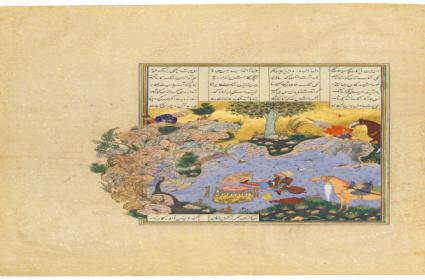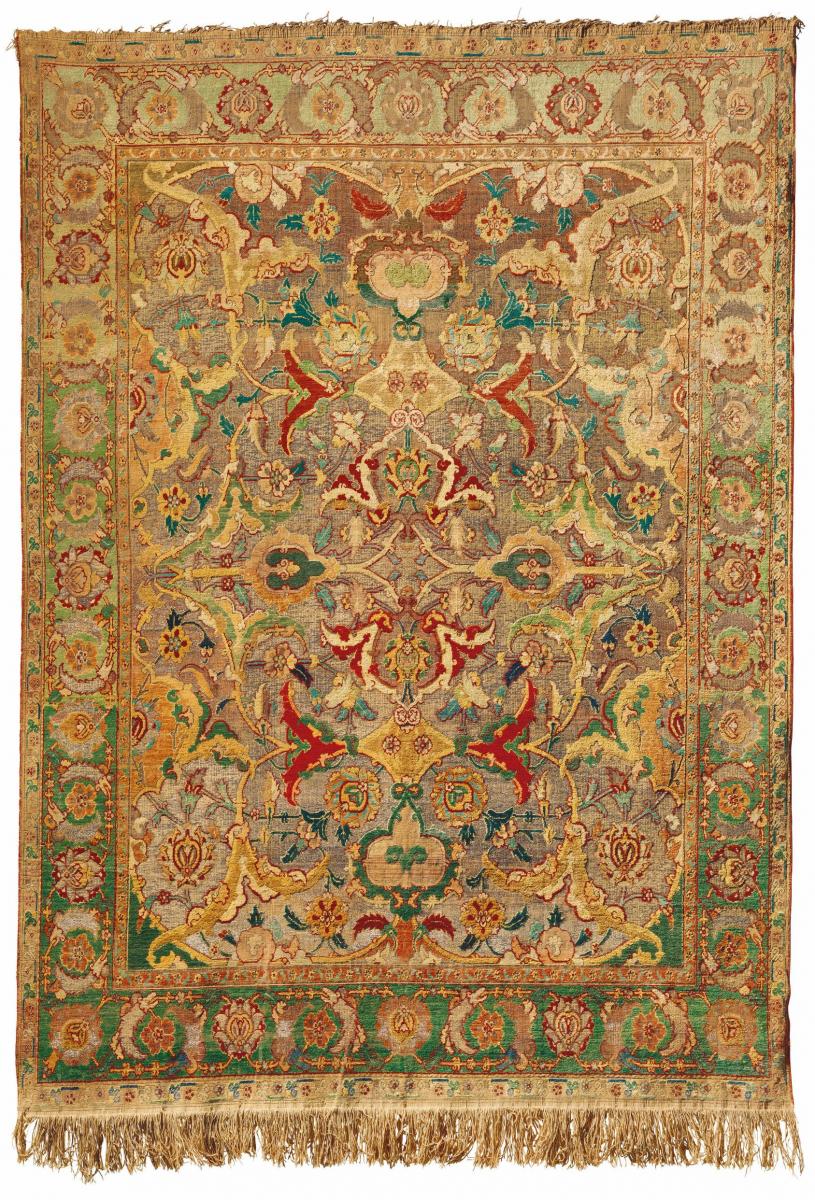Christie's Auction: Art Of The Islamic And Indian Worlds Including Oriental Rugs And Carpets Sale

A highlight of the sale taking place in London on 31 March is a rare painting from the Shahnama of Shah Tahmasp, circa 1530, attributed to Aqa Mirak, assisted by Qasim ibn `Ali, Tabriz, circa 1530, (estimate £2,500,000 – 4,000,000)
The Adolphe von Rothschild silk and metal-thread Polonaise carpet, probably Isfahan, Central Persia (late 16th/early 17th century), is another lead lot, highly prized and an example of magnificent Safavid weavings under Shah ‘Abbas I, (estimate £1,000,000 – 1,500,000)
Both lots have a Rothschild family provenance, while the Polonaise carpet has more recently remained in the same collection for more than half a century.
LONDON – Christie’s announced the Spring Art of the Islamic and Indian Worlds Including Oriental Rugs and Carpets auction taking place live at King Street, London, on 31 March. Two rare masterpieces lead the sale, exemplifying the height of artistic production in Iran under the Safavid dynasty. The first is a single folio from the most opulent and poetic manuscript produced in the Islamic world; ‘Rustam kicking away the boulder pushed by Bahman’, from the Shahnama of Shah Tahmasp, attributed to Aqa Mirak, assisted by Qasim ibn ‘Ali, circa 1530. Painting 20.8 x 21.2 cm.; leaf 47.2 x 31.1 cm. (Estimate £2,500,000 – 4,000,000).
The Shah Tahmasp Shahnama was the result of several decades of collaboration between a small number of leading artists in the royal atelier in Tabriz. The Shahnamah of Firdawsi, "The Book of Kings," is the Iranian national epic and our folio comes from the copy which is considered one of the greatest illuminated and illustrated manuscripts in the world. Sultan Muhammad, Mir Musavvir, and Aqa Mirak, were the three leading artists involved, succeeding each other as directors of the project through the years. Scholars still disagree about the actual dates of execution of the manuscript, however, it is thought to have been begun around the early 1520s, probably under Shah Isma‘il I (r. 1501–24), the founder of the dynasty, and continued for at least another twenty years under Shah Tahmasp (r.1524-76), the manuscript’s dedicatee and principal sponsor.
The second leading lot is a rare and exquisite Iranian Safavid ‘Polonaise’ carpet, Isfahan, Central Persia, late 16th/early 17th century, 6ft.5in. x 4ft.6in. (197cm. x 141cm.), (illustrated p.3 below), (estimate £1,000,000-1,500,000). Woven with luxurious silk and costly gold and silver metal-thread the carpet is the perfect marriage of beauty, artistry and exoticism. It formerly belonged to Baron Adolphe Carl von Rothschild, art connoisseur and member of the great Rothschild banking dynasty, the first member of the family to be bought out of the business in order to allow him to concentrate on collecting. The carpet remarkably still retains the original label noting its owner and that it was part of the contents of his residence at 45 rue de Monceau in Paris during the 19th century. The carpet was passed down by descent to his cousin Maurice de Rothschild and was sold in Paris in 1968 when it passed to another prominent German noble family where it has remained for over half a century.
This Iranian Safavid ‘Polonaise’ carpet showcases the magnificent Safavid weavings under Shah ‘Abbas I. The artistic renaissance that he oversaw encouraged all art forms to flourish from calligraphy, painting and metalwork in addition to carpet and textile production. Shah ‘Abbas had a great appreciation for sumptuous textiles, silks and woven carpets and production in Isfahan rapidly grew under his patronage. This lot is testament to the inspirational designs and techniques produced in the new weaving ateliers.


















